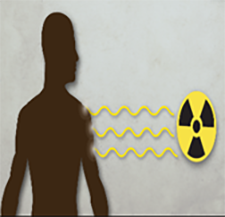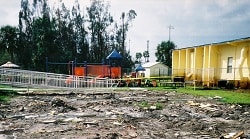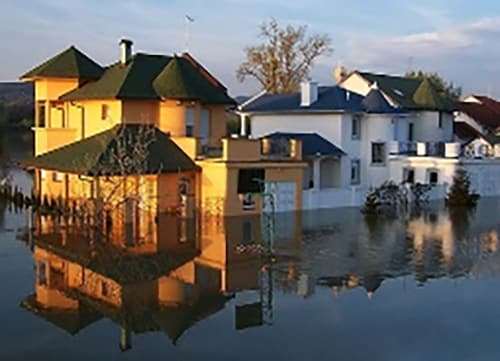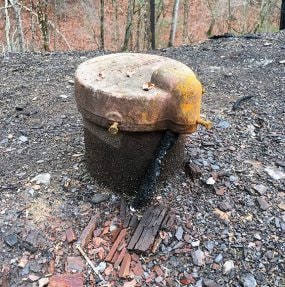CDC Environmental Health Nexus Newsletter
Healthy Environment, Healthy You
September 7, 2021 | Volume 5

Environmental News Nexus
CDC’s Environmental Health Nexus (EH Nexus) shares environmental health messages with the public and gives special attention to environmental justice.
EH Nexus newsletters provide info about environmental health issues and offers information that promotes actions to help save lives. Each newsletter will communicate how to reduce harm from many threats, including climate change, contaminated food and water, toxic environments, and inadequate systems and practices.
This issue covers the following topics:
- Tracking Connects Environment and Health Information: Join EH Nexus’ Webinar
- Environmental Public Health Tracking: Better Information for Better Health
- Tracking in Action
- Resources for Emergency Preparedness and Response
- Learn More About the Tracking Program
- Environmental Health Updates and Resources
If the newsletter was emailed to you, we thank you for joining our subscription distribution list. If you are not a subscriber, please click here, enter your email address, and click the subscribe button.
EH Nexus Webinar on National Environmental Public Health Tracking: Better Information for Better Health
September’s EH Nexus Webinar will focus on CDC’s National Environmental Public Health Tracking Network. The Tracking Network (www.cdc.gov/ephtracking):
- Brings data and important information together in one place, making it accessible and easy to share.
- Delivers information to track environmental health factors over time and improve the health of communities with data, visualizations, and interactive tools.
- Uses tools to identify communities at risk, inform policy decisions, and help everyone learn more about how the environment affects their health.
- Identifies an area’s local infrastructure, vulnerabilities, and resources to quickly establish priorities and plan proper actions during an emergency or disaster response.
This webinar will broadcast on Tuesday, September 14, from 1:00–2:00 p.m. ET via Zoomexternal icon. Closed captioning will be available.
Environmental Public Health Tracking: Better Information for Better Health
The National Environmental Public Health Tracking Program brings environmental and public health information together in one place, making it accessible to everyone and easy to share. The Tracking Program collaborates with health departments and other national and local partners to collect and disseminate data related to the environment, exposures, health effects and population characteristics.
Tracking’s goal is to increase the number of data-driven environmental public health actions and decisions by providing information from a nationwide network of standardized, integrated health and environmental data. We do this through the National Environmental Public Health Tracking Network, a web-based, multi-tiered, interoperable system of data, tools, and services. With unique data, beautiful visualizations, and interactive tools, the Tracking Network delivers information and data to track environmental health factors over time and improve the health of communities.
Tracking’s expertise, data, and tools have been used to inform decisions about allocating resources, planning interventions, and evaluating efforts to protect and improve the health of communities.
Tracking in Action
Tracking Network data allow users to stay informed about environmental health trends and emerging issues and to prepare for and respond to natural disasters or other public health emergencies. As wildfire and hurricane seasons have shown, having up-to-date, reliable information can be key to staying safe.
- Hurricane Laura: Before, during, and after the hurricane, CDC used Tracking Network data maps on flood vulnerability, community characteristics, and population characteristics to identify potential public health issues within the areas most affected. The data helped CDC communicators select and share relevant health and safety messages for those communities.
- Wildfires: The Tracking Network’s wildfire smoke tool provides information to help public health practitioners and emergency responders in the western United States identify populations at risk for exposure to wildfire smoke, keep the public informed, and facilitate response planning.
Resources for Emergency Preparedness and Response
In addition to the robust data searchable on the Tracking Network’s Data Explorer tool, the Tracking Program has developed several topic-specific dashboards to put information into the hands of decision-makers, the media, and the public. These tools can be used to quickly establish priorities and plan proper actions during an emergency or disaster response. Specifically, these tools can help
- Identify communities at risk
- Determine an area’s local infrastructure, vulnerabilities, and resources
- Inform policy decisions
- Help everyone learn more about how the environment affects their health.
The Tracking Network fills information gaps and helps us respond quickly to public health issues. Everyone deserves the same degree of protection from environmental and health hazards. Use Tracking Network dashboards below to assess unusual trends and events to help determine which communities may be at risk.
Environmental Justice (EJ) Dashboard: Environmental Justice data tools can help determine communities at risk, help make informed policy decisions, and helps everyone learn more about
how the environment affects their health.
Heat & Health Tracker: Tracking partnered with CDC’s Climate & Health Program to develop the Heat and Health Tracker. This tool allows you to see how extreme heat affects your county. View local, timely data and info to help communities to prepare for and respond to extreme heat events. Search to explore your county, populations who are at risk, and response resources.
CRC SimPLER: Emergency planners can use this tool to help understand their current capacity, potential bottlenecks, and additional resource needs when planning for population monitoring during response to a radiation emergency. Tracking worked closely with CDC’s Radiation Studies program to develop this tool.
Learn More About the Tracking Program
- Read Tracking Success Stories on how the tracking program has contributed to saving lives and protecting people from health threats.
- Watch Tracking in Action Videos look at how tracking programs across the country are making important, lasting contributions to the health of their communities.
- Check out Faces of Tracking to learn about how Tracking helps enact public health change across the United States.
Prepare for a Radiation Emergency
Radiation is part of our natural environment and increasingly plays an important role in advancing healthcare, communications, and technology. Yet exposure to high levels of radiation, like in a nuclear emergency, is dangerous and even deadly.
CDC continues to study and share information about radiation and health and develop tools and resources to prepare for a radiation emergency. Visit CDC’s Radiation and Health website and sign up for CDC’s Radiation and Health newsletter to get the latest updates, activities, and news.
Connect with National Environmental Public Health Tracking
Follow us on Twitter (@CDC_EPHTracking) and Facebook (@CDCEPHTracking) to stay up to date on the latest data, features, tools, national health trends, and more.
Visit the Tracking Network today! www.cdc.gov/ephtracking
Increases in Legionnaires’ Disease: Take Action to Prevent and Control Legionella Growth and Spread
Several jurisdictions are reporting increases in Legionnaires’ disease. Reopening of schools, workplaces, and businesses—and increases in the number of people traveling away from home—may elevate risk of exposure.
Reopening Outdoor Public Spaces After Floods
Health departments: Learn to assess risk from microbial contamination after flooding with our quick guide.
Response and Recovery Activities for Environmental Health
Find information on conducting assessments, communicating with the public, and resources to support recovery.
Private Wells After a Wildfire
Health departments: Learn about threats to well water after a wildfire and explore CDC’s rapid assessment form.
Thank you for reading. Do not keep this great resource to yourself! Please share it with your colleagues and networks.
If you are not yet a subscriber, please click here, enter your email address, and click the subscribe button at the bottom of the webpage.




